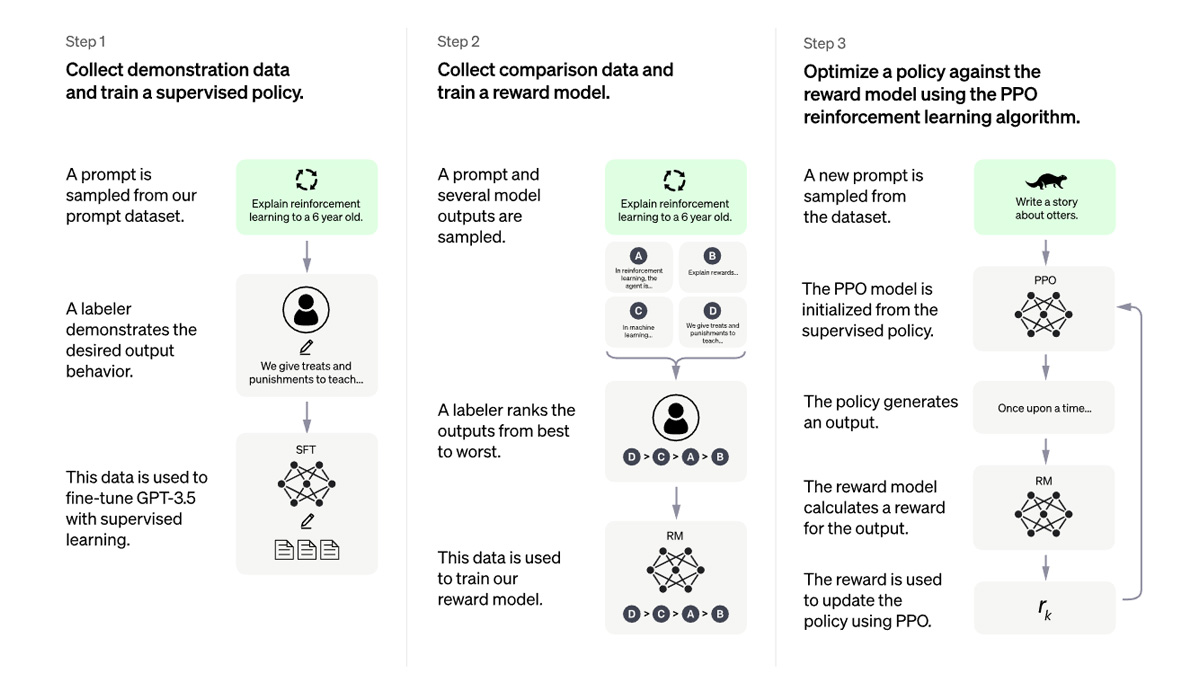ChatGPT is a new artificial language model developed by OpenAI, the makers of the DALL-E image generator. Unlike the latter, however, ChatGPT specializes in writing dialogue and texts. You can ask it almost any question and the chatbot will reply with a surprisingly elaborate piece of writing. In fact, you may even find that the tool is more eloquent than many humans. Now, we have explored ChatGPT before, looking into the hype surrounding the impressive tool, certain cybersecurity risks it poses, and even warnings about the tool put out by OpenAI’s CEO Sama Altman. Today, however, with the immensely popular continuing to grab all the headlines, we thought we would take things down to the fundamentals. That is why today, we are going to explain what ChatGPT is exactly, how to use it, and what can we use it for.

An overview of how the ChatGPT NLP model works
What is ChatGPT exactly?
We already know that ChatGPT is a chatbot, but it is not like an ordinary chatbot you interact with when, for example, dealing with an online customer service bot. So, how exactly does it work?
ChatGPT is based on the GPT-3 language model, a technology created by OpenAI. GPT stands for Generative Pre-trained Transformer model and the 3 is there because it is the third generation of the tool. As the name suggests, the tool generates text as a response to user’s text prompt, using the massive amounts of training data that OpenAI have used to build the model. Therefore, like other types of generative AI such as Stable Diffusion or M idjourney, ChatGPT has been trained with huge amounts of data, which in this specific case are written texts.
However, with text being text, ChatGPT’s possibilities go beyond the written word and can go into more complex areas of text use including coding and programming, translations, reports, and even more “human” aspects of conversational interactions such as offering therapeutic responses to any of life’s problems you may think to throw at it.
In fact, ChatGPT’s answers will likely surprise you because of how elaborate they can end up. However, the tool is still far from perfect and as we’ve covered in previous articles (see links above) the tool can’t be relied upon for factual accuracy. ChatGPT does not have an Internet connection and it can often give inaccurate responses or erroneous statements. Therefore, it is important that you check all the information it gives you before you use it for any serious purpose.
Even so, despite these types of errors and failures, ChatGPT has proven itself to be a truly impressive tool with many internet users openly speculating about all the weird and wonderful ways it will revolutionize the world.
How do I use ChatGPT?
A key aspect of its success stems from the fact that using ChatGPT is not a complicated affair. To start, you will have to access its official website, chat.openai.com. Once inside, OpenAI will prompt you to sign up and create an account before you start using the.
For now, at least, ChatGPT is completely free, and you will not have to incur any additional costs to use it. When you are done with the registration process, OpenAI will take you to the main page of ChatGPT chatbot, which is a window that looks just like an ordinary messaging app. Here you will see a text box where you will have to write your questions or prompts.
You can then begin asking ChatGPT things and it is really as simple as that. Of course you have to remember that isn’t connected to the internet so it won’t be able to answer everything and that it is a natural language processing model and not a generally intelligent machine. These two limitations set the technical boundaries for what you can ask it and what it is capable of asking. Other limitations relate to how these types of tools are created as well as how they are intended to be used. These tools are built using vast amounts of data, which means any problems in the data, for example, if it includes biased opinions, could lead to problematic responses from the tool. OpenAI tries to stop this from happening through the use of filters, which you may come up against if they work as they are supposed to. Also, ChatGPT is not supposed to create any NSFW content so any attempts to have it do so will come up against blocks too.
Of course, the other thing you should keep in mind is that everything you write will be registered on the OpenAI database. Therefore, try not to type in any personal data or valuable information.
What can I do with ChatGPT?
Today, ChatGPT is a technology does not have a specific use, which is probably why so many people have been going so crazy about it. It can do a lot of different things, which means you have wide variety of potential use cases to explore. For example, you could ask it to help you write a script or a play, summarize a book, get into coding and programming, or even write poems.
To get an idea of the many different types of things people have been using for and that you could use it for, check out our first look at ChatGPT, which we put together at the beginning of December.





Recommended Comments
There are no comments to display.
Join the conversation
You can post now and register later. If you have an account, sign in now to post with your account.
Note: Your post will require moderator approval before it will be visible.